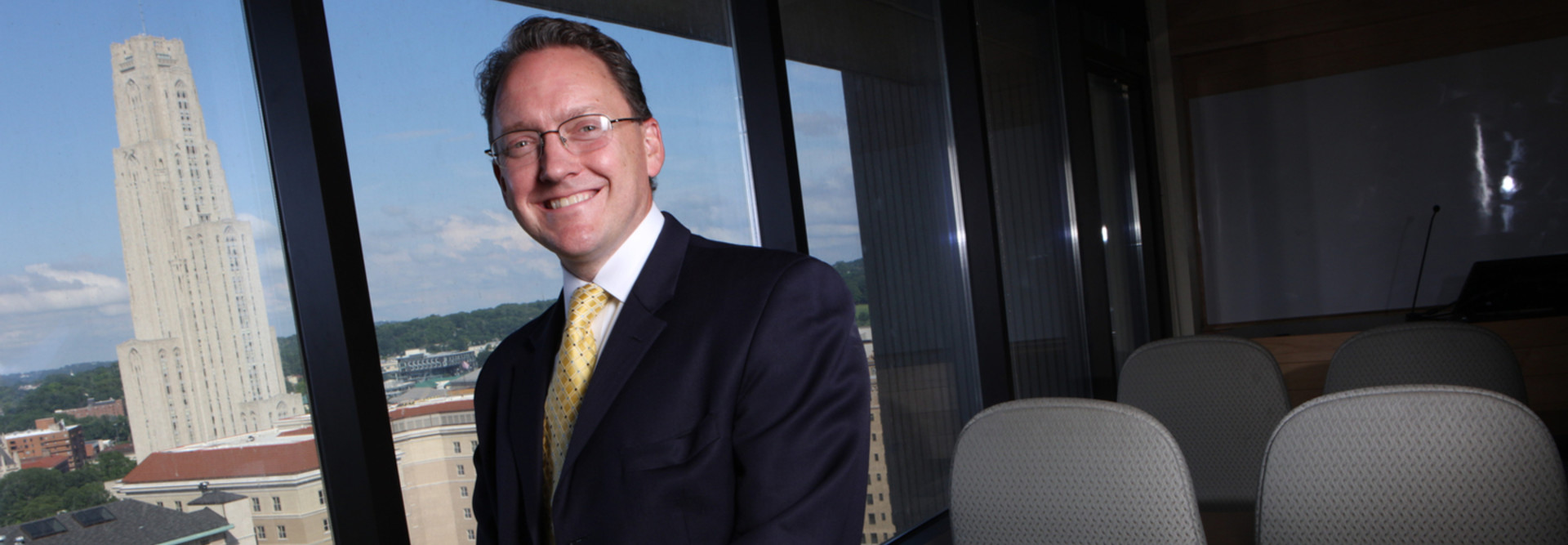How the University of Pittsburgh Trains Engineers in Innovation and Entrepreneurship
Walking up O'Hara Street in Pittsburgh's Oakland neighborhood, the urban home of the University of Pittsburgh, those approaching the brutalist architecture of Benedum Hall might not readily suspect that innovative changes are taking place inside.
Completed in 1971, the blockish Benedum, home of the University of Pittsburgh's Swanson School of Engineering, has been undergoing a $100 million face-lift since 2008. The first — and most visible — phase of the ongoing project included construction of the sweeping, 22,000-square-foot addition known as the Mascaro Center for Sustainable Innovation, which now houses laboratory and administrative spaces.
The second phase, which began in January 2011, includes the addition of research, classroom and office spaces on Benedum's sixth through 12th floors. Swanson also has transformed the third floor into the technology-rich, 16,500-square-foot Innovation Floor, which now boasts large classrooms and meeting rooms alongside informal study areas where students can work together on projects and interact with faculty.
In many ways, the Innovation Floor also represents a larger effort by Swanson's leadership to infuse the concepts of innovation and entrepreneurship in the engineering curriculum and shift away from traditional lecture-based instruction to alternative styles. By combining collaborative learning spaces with high-powered computers, video conferencing and other technology, Swanson now offers students a venue and tools that foster creativity as well as the communication and leadership skills required for later career success.
"We need to produce engineers who are not only technically proficient, but who also have communication skills and an eye for innovation in creating the next wave of technology," says Mary Besterfield-Sacre, director of the Swanson School's Engineering Education Research Center. "We have to introduce innovation in the design process and teach techniques in entrepreneurship, so that students' ideas can traverse the course from conception to the marketplace."
The University of Pittsburgh is one of many U.S. colleges and universities busily building new campus buildings (or renovating existing buildings as their budgets allow), not only to improve the teaching and learning experience, but also to add prestige and enhance their reputations, which ultimately help in attracting and retaining quality faculty and students.
Opened in August 2012, the floor is the brainchild of Senior Associate Dean of Academic Affairs Larry J. Shuman, built as a central resource for all six engineering departments and the freshman program.
Innovation Starts Here
The design of any new campus facility, whether a lab, a floor or an entire building, also serves to support an institution's educational mission, and that's just the case with the Innovation Floor, which was created with collaboration and innovation in mind, says Brian Vidic, director of technology at the Swanson School of Engineering. To foster greater student-faculty interaction, the floor provides office space for innovation-focused faculty who specialize in advanced manufacturing, product development and rapid prototyping. Hallways are filled with whiteboards and alcoves include benches to support impromptu discussions among students and faculty. "We don't want to be constrained by the physical classrooms being the only location where people can collaborate," Vidic says.
Total cost for the technology now housed within the Swanson School of Engineering Innovation Floor
SOURCE: University of Pittsburgh Swanson School of Engineering
Instead of stadium-type seating, classrooms now include small conference tables that enable students to work together in project-based classroom learning. Each table boasts three high-powered HP Z210 workstations and three 21-inch LCD monitors that provide access to MathWork's MATLAB, National Instrument's labVIEW and more than a dozen other engineering design and simulation software programs.
Each classroom offers access to two Panasonic HD projectors, a document camera and an audio system featuring speakers and gooseneck and wireless microphones. A podium houses an HP Z210 workstation and a Crestron touch-panel device that allow professors to easily manage audio-visual equipment and switch from one device to another. Two projectors are necessary to allow the simultaneous display of a lecturer's own computer screen and a student's computer screen. Using Netop's class management software, professors can now manage student computers and project different screens.
"They can easily display the screen of a student who got a solution correct while showing a second problem on another screen," Vidic says.
Two high-definition video cameras also allow future streaming of popular class lectures to an overflow room. Eight design rooms were built out to assist students working on senior design projects. Each includes a conference table, an Internet-connected computer and 47-inch LG LED television along with seating for six to eight people. Central IT installed 20 wireless access points throughout the floor, so students also can use personal mobile devices or notebook computers while they meet. Moving forward, the school plans to include 3D printers and clay in each design room to enable students to view physical models of their ideas, Vidic says.
A corporate-style meeting room also was built to host "extended design and project team meetings involving faculty from the Swanson School and colleagues from other schools or industry who are working on very large projects and require private space for an extended period of time," Shuman says. Video conferencing equipment allows such meetings to be held virtually if key partners are unable to meet face to face.
What the Future Holds
Since its official opening, students seem to be embracing the new facilities, Vidic says. While technologies are now state of the art, Vidic expects components will be updated within the next three to five years. This fall, testing on virtual desktops will begin, and Vidic plans to install a virtual desktop infrastructure within the next two to three years. VDI will simplify IT management, increase security and save money, while also allowing students to access computing resources and engineering applications remotely.
So far, no other schools within the university have developed plans for similar floors focused on collaborative learning. If and when they do, the Innovation Floor can serve as their proof of concept.
"When this design comes up again, they can point to this and see that it worked really well."









